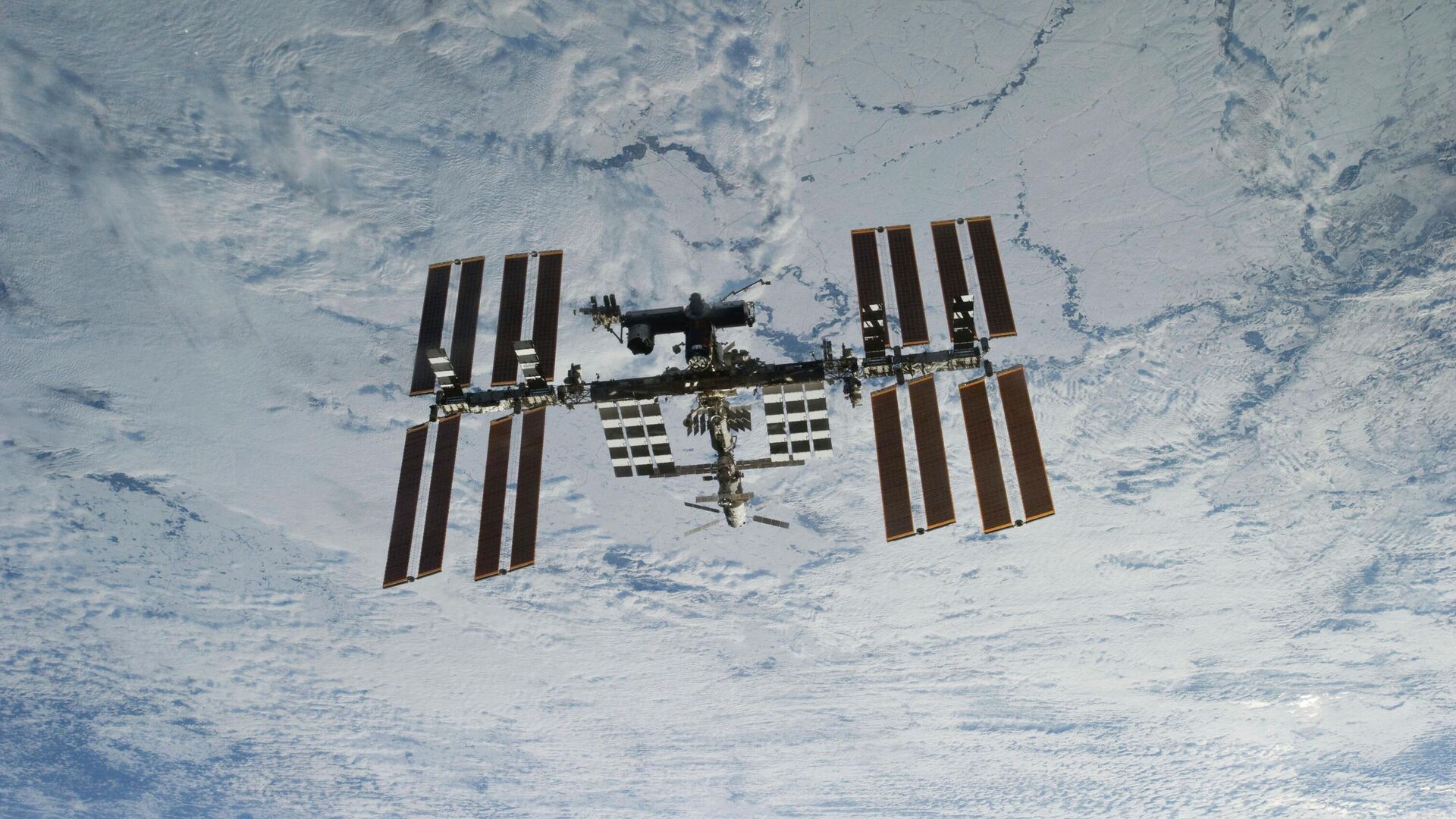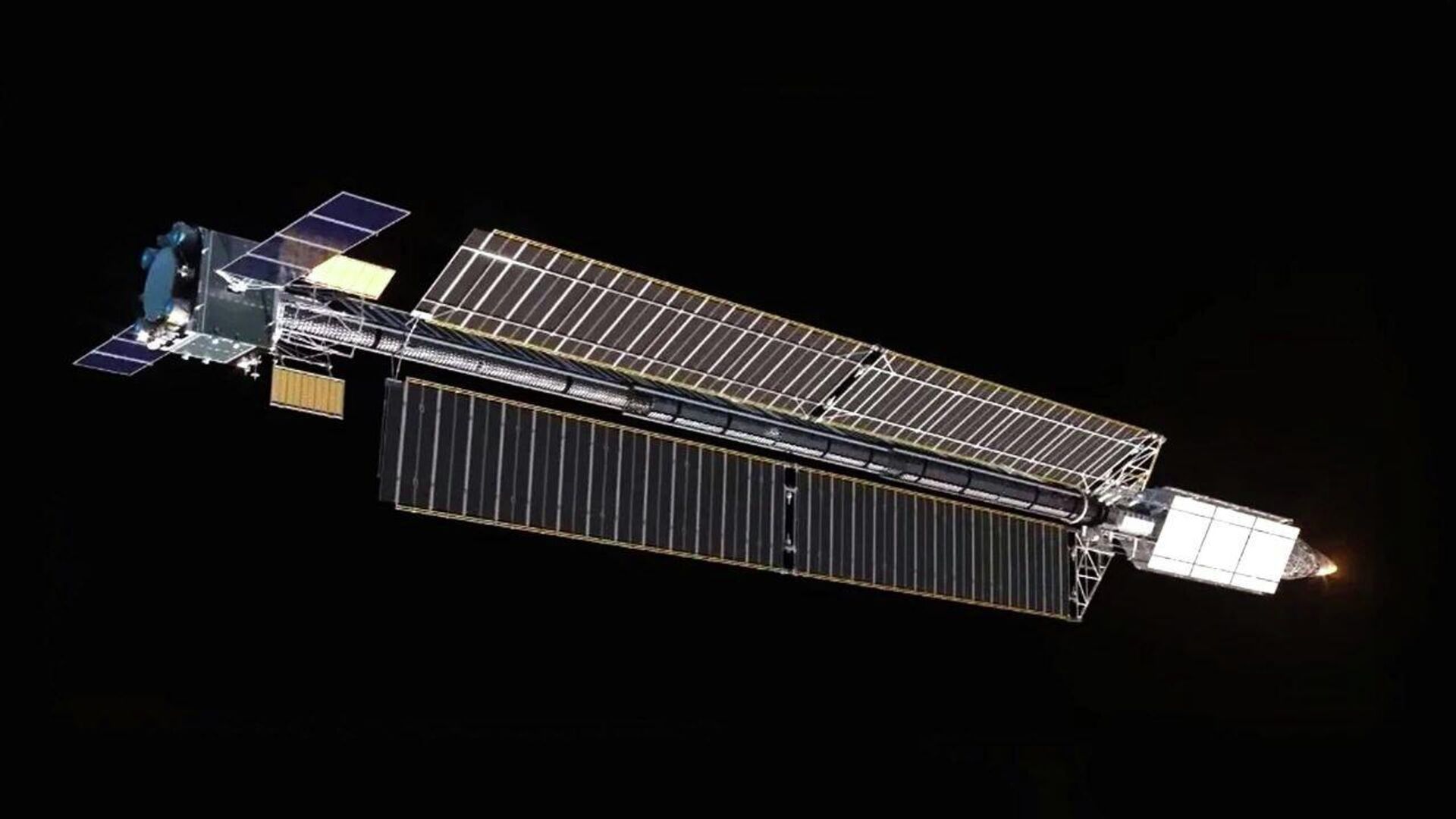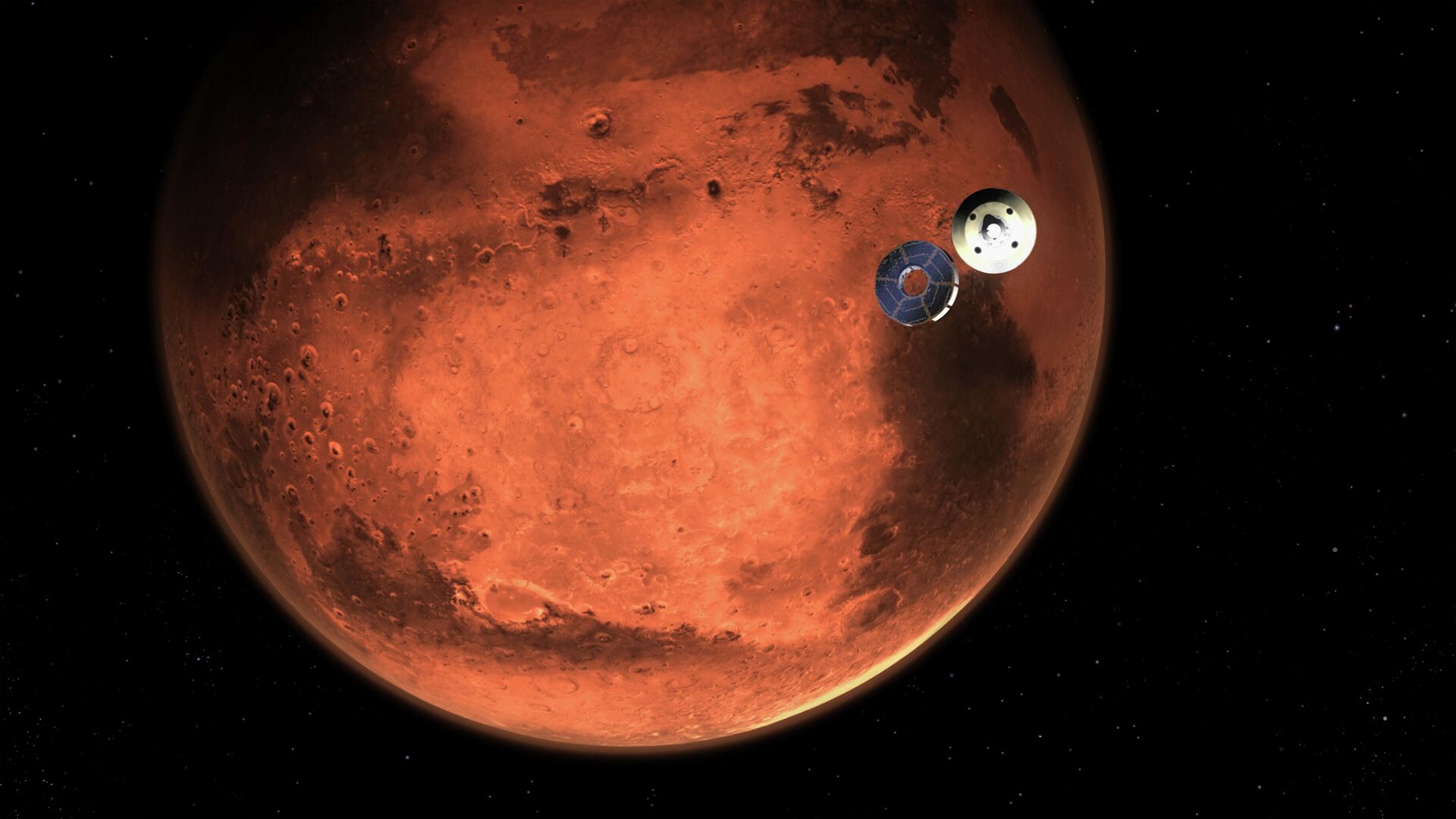US Peddles Disinformation & Russophobia to Perpetuate Its Space Based Warfare Edge

© AP Photo
Subscribe
Over the years, the US has leveraged its technological and financial prowess to deploy space based hardware that gives it an overwhelming military advantage over other nations, particularly any nation aspiring to challenge US global hegemony.
US investments in reconnaissance, communication, and ELINT satellites provide its military unprecedented situational awareness and battlefield transparency. US space assets are force multipliers that make US weapon systems more effective than those of its challengers.
Having acquired an overwhelming military advantage, the US now wishes to perpetuate it! Through international agreements that ostensibly promote world peace and safety, but in fact limit the ability of other nations to counter the US space based military advantage.
The US wants to prevent other nations from 'weaponizing space' while the US itself vigorously develops and deploys space based weapons such as the X-37 unmanned reusable space shuttle.
The problem is, nations unwilling to accept US hegemony and military supremacy - India, China, and Russia included - can do so only by deploying space based weapons capable of degrading or destroying US space based military assets.

The launch of the Progress MS-25 cargo ship on a Soyuz-2.1a carrier rocket from the Baikonur Cosmodrome on December 1, 2023.
© Photo : Roscosmos
Disinformation & Russophobia to Perpetuate US Space Based Military Advantage
The US leadership, which has repeatedly stated that it seeks a strategic defeat of Russia, is now putting pressure on Russia through the UN to enter into an agreement that will prevent Russia from developing and testing space based technologies that could pose a threat to US superiority in space.
The campaign to pressure Russia into submission started dramatically in February 2024 with the US House Intelligence Chair Mike Turner (R-Ohio) telling the US government controlled mainstream media that he had asked President Biden to declassify information about a “serious national security threat.”
The US MSM, the New York Times in particular, copiously garnished Turner's statement, using uncorroborated comments by unknown sources, to imply that the "serious national security threat" referred to Russian intent to detonate a nuclear weapon in space to destroy satellites.
The US disinformation was actually aimed at preventing Russian development of a nuclear energy powered plasma rocket engine.
Russia is developing the engine to power a space tug called Zeus to move cargo repeatedly and relatively cheaply between earth and moon orbits. The US is projecting the nuclear powered plasma engine as a nuclear weapon.

Render of Zeus space tug.
© Photo : Roscosmos
The Outer Space Treaty ratified by about 114 countries including the United States and Russia prohibits the deployment of “nuclear weapons or any other kinds of weapons of mass destruction” in orbit or the stationing of “weapons in outer space in any other manner.”
Kremlin Denies US Space Weapon Fears
The Kremlin has rubbished US fears and said it has no intentions of deploying weapons in space.
Russian President Vladimir Putin at a televised meeting with Defense Minister Sergei Shoigu said, “We have always been categorically against and are now against the deployment of nuclear weapons in space.
“We are doing in space only what other countries have, including the United States.”
US President Joe Biden acknowledged that the Russian program that Turner alluded to was related to damaging satellites in space, though there was no evidence that Moscow had decided to move forward with the program.
Hypothetically speaking, if the nuclear reactor that Russia is developing to propel its Zeus space tug was to be fitted on a satellite, it could provide enough electrical power to energise a DEW (Directed Energy Weapon) that could render inoperable, or destroy, adversary satellites. However, it's quite a stretch to conclude that if Russia launches the Zeus space tug into orbit for its lunar exploration program, it would be deploying a nuclear weapon in space!
However, outlandishly enough, some US officials contend that an accidental explosion of the nuclear reactor could damage or destroy satellites and knock out communications on earth.
US Attempts to Frame Self Serving Rules
In March 2024, Bloomberg reported that the US is preparing a United Nations Security Council resolution that would warn against deploying nuclear weapons in space.
Ignoring President Putin's denial of Russian intent to place nuclear weapons in space, the US continued to push its disinformation on Russian intents.
Nathan Evans, spokesman for the US mission to the UN, said in a statement, “Parties to the Outer Space Treaty have obligations under international law not to place nuclear weapons or any other kinds of weapons of mass destruction into orbit.
“We are consulting with members of the UN Security Council on how we can best reinforce this important principle.”
In April 2024, the Politico reported, quoting a senior Pentagon space official, that the Biden administration is in talks with US allies and Russia to dissuade Moscow from positioning an anti-satellite nuclear weapon in space.
The report dubiously claimed that besides the UN, American officials are using countries such as China and India to persuade Moscow to abandon its plans to test launch its space weapon.
President Vladimir Putin accused the West of disinformation, emphasising that Russia has no such plans. In his message to the Federal Assembly, Putin said that through disinformation, the West is trying to draw Moscow into negotiations beneficial to Washington.
In addition, the president doubted the statements of the American authorities about their interest in negotiations with Russia on issues of strategic stability.
On the sidelines of the Space Symposium in Colorado Springs on April 9, US Space Command Commander Stephen Whiting told Sputnik that the US and Russia need to have a safety deconfliction channel on Space, like the one they have in Syria.
“I think we all have to be responsible actors and we need to live up to our international obligations and act responsibly and safely on orbit,” he said.
Whiting went on to say that as signatories, both the US and Russia should live up to the Outer Space Treaty obligations.
Funny Whiting should say that considering the number of strategic arms control treaties that the US has unilaterally pulled out of including -
The Anti-Ballistic Missile (ABM) Treaty on June 13, 2002. The ABM Treaty was signed in 1972
The INF Treaty on August 2, 2019. The INF Treaty was signed between the United States and the Soviet Union in 1987, banning the possession, production, and testing of ground-launched ballistic and cruise missiles with ranges between 500 and 5,500 km.
The Open Skies Treaty on May 21, 2020 which allowed signatory countries to conduct unarmed surveillance flights over each other's territories to promote transparency and reduce the risk of conflict.
US Space Based Warfare Against Russia
The US deviousness on the issue of space based weapons is astounding, considering that it has unabashedly used its space based assets to fight against the Russian Forces, using Ukraine as a proxy. US space based assets have been responsible for the deaths of hundreds of Russian soldiers and the destruction of Russian military hardware and civilian infrastructure.
In February 2024, Russian Defense Minister Sergei Shoigu revealed that “There are currently 67 NATO special reconnaissance satellites" operationally deployed against Russian forces.
"And if we take the total constellation of satellites of the countries that support Ukraine, we get 260 satellites that work against us' round the clock, monitoring the movement of Russian forces and transmitting targeting information.
US and NATO reconnaissance satellites monitor the movement of Russian forces and provide targeting information, and ELINT satellites, using their ability to determine whether a Russian air defence system, such as a S-400 battery, is on, or offline, provide safe routing for Ukrainian cruise missiles like the UK supplied Storm Shadow and the French Scalp.
In February 2023, the WP, quoting Ukrainian officials, reported that the AFU "almost never launch HIMARS rounds without detailed coordinates provided by U.S. military personnel situated elsewhere in Europe."
Excessive US Reliance on Space Based Assets
In addition to ISR (Intelligence, Surveillance and Reconnaissance) US satellites of the Starlink constellation provide secure battlefield communication support to the Ukraine Armed Forces.
Indeed, seeing the effectiveness of Elon Musk's Starlink communication satellite constellation, the US Department of Defense has ordered SpaceX to set up an even more capable satellite constellation called Starshield exclusively for the US military. In addition to communication support, Starshield constellation satellites will carry out earth observation, the military euphemism for reconnaissance.
As mentioned in the opening paragraphs, the US military is already heavily dependent on space based military assets. The Starshield constellation will further increase the dependence. As a result, the US ability to fight wars without its space based assets, already in doubt, will further erode.

Mars
© Photo : NASA/JPL-Caltech via AP
Starlink and Starshield constellations use a very large number of small satellites in low earth orbit (LEO). The large number provides redundancy and global coverage, while LEO facilitates low latency broadband communication.
Small satellites cannot be hardened against DEW, but their low cost, orbital redundancy and global spread makes ground based DEW or kinetic weapons ineffective against them.
However, a space based DEW in high earth orbit poses a lethal threat to a Starshield like constellation. Placed on a large satellite equipped with high power generation capability and enough computing horsepower, the satellite can punch holes in the constellation.
Russia is developing the technology to counter Starlink and Starshield like constellations, which is what the US is so worried about.
Conclusion
The US is vigorously running a disinformation campaign to stop Russia from developing and testing technology that could blunt the US military's edge on account of its space based assets.
Russia has no intent to deploy a nuclear weapon in space. It does, however, plan to use nuclear energy for space propulsion for planetary exploration. Russia's ability to operate a nuclear reactor in space will give it an electrical energy source capable of powering a DEW.
A space based nuclear reactor is not a nuclear bomb, just like a ground based nuclear reactor is not a nuclear bomb. Contrary to US disinformation, a nuclear reactor cannot explode like a nuclear bomb. At worst, it can cause a heavy radiation outage. Modern technology has ensured safe nuclear reactor operations for decades.
The right to self defence is enshrined in the UN charter. Russia has as much right to deploy Anti-satellite weapons (ASAT) weapons in space as the US has to use its satellites to wage war against Russia, particularly factoring in the publicly stated US aim of inflicting strategic defeat on Russia.

